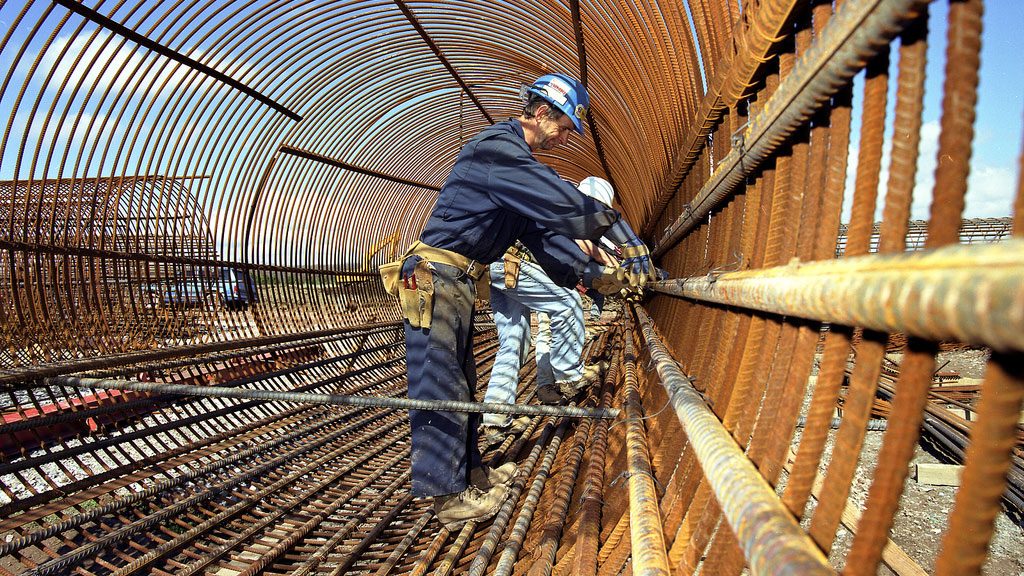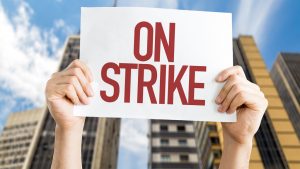The Workplace Safety and Insurance Board (WSIB) recently released the 2019 Health and Safety Index which indicates Ontario’s workplaces are 1.9 per cent safer than last year, including construction which had the second highest score and was the only sector that saw a year-over-year increase two years in a row.
The index tool combines multiple performance indicators of health and safety into a single, evidence-based measure or score, looking at prevention, empowerment, workplace culture, enforcement and injuries.
Construction is the only industry to be positive both years of the index, but to a lesser degree in 2019, indicates a release, adding last year the only negative area was injuries, but this year, it was joined by enforcement.
“In 2018, construction saw an increase of 3.7 per cent and construction was the only sector that saw an increase again in 2019 of 1.9 per cent,” explained Terrance D’souza, executive director, advanced analytics at WSIB.
“It’s a year over year change so if you were high last year you are starting at a higher point for the following year. Even though it is a lower improvement, you are still improving from a higher point so it’s a really good news story.”
There were a number factors which caused the improvement to be lower this year than last year in construction.
Construction has seen overall improvement year-over-year unlike other sectors
— Terrance D’souza
Workplace Safety and Insurance Board
While the number of severe injuries did improve, poor return-to-work results and an increase in the number of injuries overall contributed to a lower score. Prevention was the strongest area for construction, lead largely by the number of proactive inspections in 2019, D’souza noted.
“There are a number of different metrics that go into the index that push it up or down,” said D’souza.
“The big factors driving it up were we had fewer severe injuries. We had some poor return to work outcomes that were driving it down but prevention and the number of inspections specifically were areas that are leading to a lot of improvement in the construction sector. Areas that we think construction needs to focus on a little more is addressing injuries, getting people back to work and also preventing claims.”
Rather than measuring health and safety in individual workplaces, the index looks at Ontario as a whole across many industries, not just construction. When combining all these scores, although there was an increase in claim numbers, people feeling empowered at work and the lower number of severe injuries raised the overall score, explained Christine Hoy, vice-president, corporate business information and analytics at WSIB.
Driving up the overall improved performance of the index was a 5.7 per cent increase in workplace prevention activities and a 15.2 per cent increase in empowerment.
There was decreased performance in the following indicators: enforcement dropped 5.5 per cent, injuries dropped 2.8 per cent and workplace culture dropped 0.5 per cent.
“When we think about the results for this year we can say that based on the 2018 numbers that we have actually improved by 1.9 per cent,” said Hoy, about the overall results of the Health and Safety Index.
“There are three main areas that helped to improve the score: people feeling empowered at work, we had a lower number of severe injuries across the province overall and then there was an increase in overall claims but those two other pieces helped balance it out.”
In addition to the overall score, the results are broken down into the five largest sectors which are given individual scores. Healthcare had the highest score this year, which indicates the most improvement, followed by construction which had the second highest.
Transportation, manufacturing and retail rounded out the top five.
“Construction has seen overall improvement year-over-year unlike other sectors,” said D’souza.
“When you think about the construction sector specifically and Ontario as a whole, we’ve seen for example claim volume has been going up in Ontario. Construction is the only sector in 2019 that, even outside of the index, saw a decrease in the lost time injury rate. We are seeing year over year improvement in the construction sector and that is probably an indication of is the investments that are being made in construction are leading to better outcomes.”
The measure helps to not only raise awareness but can also assist people make informed decisions about their health and safety efforts and resources. As the WSIB gathers more information and data in the future, they are hoping to better understand what is happening in the subcategories of the index, explained Hoy.
“That is where we are hoping that employers can take some of those areas — whether it’s an area of strength or an area of focus — and better understand how they can actually improve their scores for the future and changes that they need to make,” Hoy stated.
The data sources for the Health and Safety Index include the Ministry of the Attorney General, the Ministry of Labour and the Prevention Office. The Conference Board of Canada has endorsed the methodology.










The elephant still sits quietly on the tailgate.
How does WSIB have the brass to state that construction injuries are down?
With all due respect to Mr D’souza, one metric that is ignored is injury under reporting, which in the construction industry has been endemic in both Canada and the USA for years? Dong, et al (2001) https://www.ncbi.nlm.nih.gov/pubmed/21246588
“Without reliable data regarding workplace injuries, OSHA and MSHA lack the information needed to effectively focus inspection and compliance efforts on the most hazardous workplaces,” OIG states, adding that OSHA reports it has made progress on this matter by encouraging employers to comply with reporting requirements through a combination of enforcement, outreach and compliance assistance efforts. https://www.safetyandhealthmagazine.com/articles/17741-underreporting-of-injuries-among-greatest-challenges-for-osha-msha-report
It is very difficult to change the workplace culture of under reporting, yet Sparrow (2008) advises lawmakers and regulators to ‘Pick Important Problems, and Fix Them’ p. 5. When it comes to occupational risk of harm to construction workers, under reporting of injuries is indeed an Important problem and we must recognize this reality before we can develop mitigating solutions.
Gavan Howe PhD (at dissertation)